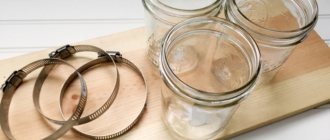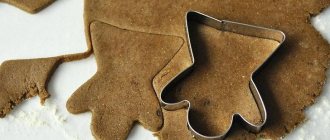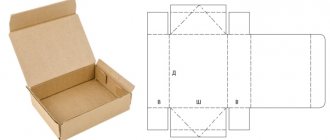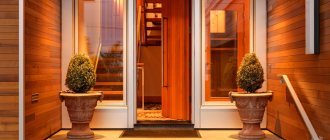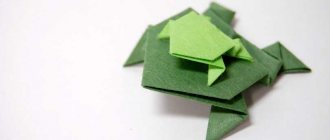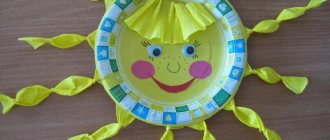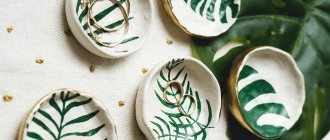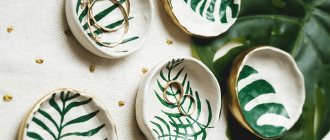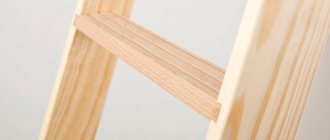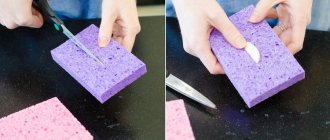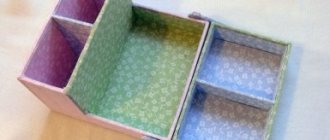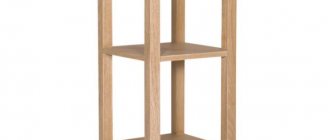More and more people are taking care of their health. And it’s not just about diets and proper nutrition. What we eat and drink from plays an important role. For example, many people, keeping an eye on their water balance, purchase bottles made from environmentally friendly material.
Over the past seven years, hand made has become popular in Russia. The trend of recent years is DIY wooden utensils. More and more people are starting to talk about returning to the roots. There are many reasons for this.
How to make wooden dishes with your own hands?
join the discussion
Share with your friends
- Pros and cons of wooden utensils
- Material for production
- How and from what the ancient Slavs made dishes
- Required Tools
- Features of the technology
Not only the original appearance and pleasant natural aroma of homemade wooden utensils make it valuable and preferable - it is equally important that it can carry a positive charge of energy, make food more tasty and healthy, and in some cases change a person’s attitude towards many things.
Pros and cons of wooden utensils
Plates, bowls and cups made of wood have a number of advantages that cannot be ignored:
- they are useful for consumption simply because they are created from environmentally friendly natural material;
- wood has high mechanical strength and at the same time is light in weight, in addition, such material is able to keep food fresh for a long time;
- the wood itself is distinguished by its aesthetic appearance, and, depending on the species, has an original natural ornament - such dishes become a real decoration of the table, and it is pleasant to eat from it, but even as a decorative element such an unusual attribute looks great;
- Due to the fact that wood does not conduct heat, it is impossible to get burned on it, and food remains hot for a long time.
Another advantage of hand-made wooden utensils is the ability to create any conceived shapes according to the most unusual sketches. At the same time, the material itself is not too expensive, so making it yourself is considered financially profitable.
The disadvantages of wooden products are that they have a shorter service life compared to dishes made of glass and polymer fiber; wood can darken and crack if it is not used and stored correctly. In order for a piece to last as long as possible, it needs proper care and periodic restoration.
Decorative wooden plates: execution
Decorative plates, carved from valuable wood with expressive texture and color, are valuable in themselves, and therefore do not require additional decor
. They can only be decorated with carved details. To perform painting or decoupage on decorative dishes, take special blanks made from inexpensive types of wood: pine, spruce, linden, alder.
wooden plates
- Carved wooden plates. Decorative dishes can be covered with relief carvings on both the internal and external surfaces. In this case, the motif is chosen either ornamental (repeated with a certain step) or accent (symmetrical or asymmetrical).
- Painted wooden plates. Painting wooden utensils with paints is a way to give utensils a bright image
. Traditional types of wood painting: Mezen (ochre-red ornament with deep symbolic overtones), Gorodets (birds, horses, roses), Khokhloma (lush patterns, twigs, leaves on a gold background or gold on a dark background), Zhostovo painting (flower bouquets ). - Wooden plates with decoupage. It is advisable to select a design for decoupage of decorative dishes in the style and color scheme in which the interior is decorated. Country style suggests a brighter palette of colors in the design of tableware, Provence, shabby chic and vintage - a slightly faded, dusty set of pastel shades.
Material for production
Basic requirements for material for the production of wooden utensils:
- high-quality and ductile wood with high strength characteristics, and it is such when it is harvested recently, that is, it still retains freshness;
- the tree must be of the first or second grade, it must have a minimum number of knots;
- the presence of cracks, chips, rot and blue discoloration is considered unacceptable defects;
- in the production of food utensils, only living wood is used, and dead wood is not suitable for this, especially since they can be infected with bark beetles;
- For the craftsman making the products, the large diameter of the tree is also important, since it makes it possible to produce a large number of table accessories.
Soft varieties are more flexible and ductile; they cut well during processing, but are not used due to the lack of sufficient hardness and strength.
The most common species used for production are elm, oak, birch, maple, rowan, juniper, cedar, larch or aspen; olive and bamboo are considered suitable materials.
A simple way to make a plate from scrap wood
Hello, dear readers and DIYers!
After felling or pruning trees, especially in your garden, good logs are often left behind. Typically, such firewood from fruit trees is left for cooking kebabs. However, if you have the opportunity to dry such blanks thoroughly, then you can make beautiful products from them.
In this article, Vladimir, author of the YouTube channel “Vladimir Natynchik DIY,” will tell you how he made a simple plate. It is suitable for cookies, sweets, nuts or fruits.
When making this homemade product, the master used a minimum of tools.
Materials needed for homemade products. — Thick piece of board — Sponge, linseed or mineral oil.
This workpiece has already undergone a drying process and its moisture content can be measured using a contact hygrometer. This is one of the varieties of such devices, and to measure you need to stick two probes into the thickness of the wood. It is quite difficult to insert the probes deep into the material, and the measurement takes place on the outer layer, which will result in an error.
An induction hygrometer turns out to be much more informative - it allows you to take measurements at a certain depth in a non-contact way.
Further processing is carried out using a disc sanding attachment. It can be installed on both an angle grinder and a screwdriver.
Removing marks left by the previous disc in the recess is done with 40-grit sandpaper.
I thank Vladimir for the master class on making a simple and beautiful plate from scraps of wood.
Good mood, good health, and interesting ideas to everyone! Subscribe to the telegram channel
site so as not to miss new articles.
The author's video can be viewed here.
Source
How and from what the ancient Slavs made dishes
In the distant past, our ancestors made different types of dishes - cut, turned, hollowed or cooper's, which were assembled from rivets and then fastened with hoops. The most popular in Rus' was turned wooden utensils - plates, mugs, mortars and glasses, as well as cutlery (pestles, spoons, ladles) were produced using this method. In addition, ancient craftsmen attached considerable importance to the healing and magical properties of certain tree species, which is why they took for their work:
- birch, dishes from which were intended mainly for women, as they could cure infertility;
- a nut that helps to make loyal friends and give vital energy in return for wasted energy;
- olive helped eliminate migraines and opened up new opportunities;
- oak, symbolizing a strong masculine principle, helped relieve ailments of the genitourinary organs and liver;
- girls who wanted to get married quickly tried to eat from dishes made from the trunk of an apple tree - there was an opinion that the female tree would help find the other half.
Perhaps modern craftsmen should use the methods of the Russians and create products that can not only serve as tableware, but also cure diseases and change a person’s destiny for the better.
Required Tools
If you plan to produce a large batch of wooden utensils, it is best to make them on a lathe. However, before this, preparatory work will be necessary, including the preparation of material, preferably of high quality, and therefore you will need:
- inspect lumber;
- remove excess knots and minor defects;
- cross-cut the wood - divide the cross-cleaned logs into multiple parts, in accordance with the required length of the workpieces.
After turning on a grinding or turning device, the products will need to be coated with varnish (if desired, with a pattern).
But if you plan to produce a small number of products or a one-piece item, when performing manual work you can get by with a minimum of tools:
- planing device for processing a wooden surface - a plane;
- to cut the workpiece you will need a jigsaw;
- a set of hacksaws of different sizes with different teeth;
- several chisels (cutting hand tools);
- a set of cutters necessary for slotting and planing work;
- emery cloth for sanding wood.
The material chosen is full timber or boards, but waste materials that are suitable in size can also be used. Far fewer tools can be used to complete the job if the craftsman is familiar with the manual manufacturing process.
Necessary equipment
Before purchasing equipment, you need to decide on the location where the workshop will be. The equipment takes up a lot of space. A barn, garage or spacious room will do. Room temperature must be maintained at 18-22°C.
The set of necessary equipment includes:
- grinding device;
- drilling machine;
- lathe;
- a circular saw;
- electric plane;
- set of cutters;
- chisels;
- needle files;
- files;
- jigsaws;
- carpenter's plane.
This is a professional set that involves in-house production. Such a device will cost about 40,000 rubles.
Features of the technology
For those who are just starting to master the production of wooden utensils, it is better to start with products of simple shape.
Stages of work.
- First, they make the required blank, cutting off the unnecessary part from the lumber, but leaving a reserve, since the wood still has to be processed. If this is a plate, then it is better to take a cut of wood of the required diameter.
- Markings of the future item are applied to the blank with a marker.
- After this, the workpiece is secured using a vice and excess parts are cut off, including recesses and special relief.
- After marking the side contours, they begin a more subtle process, using a chisel or curly cutters.
- It is advisable for inexperienced craftsmen to securely fasten the workpiece and work carefully, since any inaccurate movement can lead to the removal of an excess layer.
As a result, the plate takes on its originally intended shape, but it still needs to be properly sanded using an emery stone and paper (the cloth is used for processing curved and internal surfaces).
If a design is intended (ornament, dot painting), then it should be done immediately before impregnation and coating with varnish or coloring composition.
The protective layer is necessary because the dishes are intended for food, which means the food can be hot or liquid. This can have a negative effect on the wood. But antiseptic agents, usually used for this in construction, are toxic, so linseed oil is used for these purposes. They need to saturate the product and wait at least 24 hours until it completely penetrates its structure. This is done simply - the finished accessory is immersed in boiling oil for a few seconds, twice in a row.
Another coating option is a special food varnish that is not exposed to ultraviolet radiation , water, fungal microorganisms and insects. This is a durable product that will help protect wooden utensils from low and high temperatures; its range of use is from -30 to +60 degrees. If paints such as acrylic or gouache were used for painting, varnish is applied on top and perfectly preserves the ornament. The tree can also be coated with a special glue, which is an impregnation of vegetable oil and beeswax.
Production technology: the choice is yours
Plates can either be made from a single piece of wood or glued together from individual pieces of wood. Many people believe that tableware made from solid wood is better, and indeed, it has undeniable advantages.
- Environmental friendliness. Even solid plates treated with a special antiseptic do not have any harmful effect on human health.
- Plastic. Wood is much more practical at home: while glass and stone can break when dropped, this will never happen with wooden plates.
- Aesthetics. The elegant appearance of sawn wood will give odds to any very skillfully painted metal and ceramics.
However, we believe that when using wooden plates for utilitarian purposes, it is worth choosing plates made from tightly compressed and glued wood particles, because they have their own advantages.
- Such plates, unlike solid plates, are not affected by moisture and temperature.
- They are more durable and practical.
- Glued plates are treated with special compounds that prevent rotting, swelling, darkening and allow such plates to live almost forever.
Whatever plates you choose, they will bring joy to everyone - both the owners and guests of the house. However, wooden plates can be used not only for household needs.
Homemade wooden plate from a multi-layer blank
Most likely, every craftsman has had a question about where to put a considerable number of pieces of boards of various types of wood that you don’t want to throw away, but where to use them is also not so easy to figure out.
We will study the technique of creating a wooden dish; it can just be made from these scraps that you can’t attach anywhere, but it’s a pity to throw away. A homemade wooden plate will be created from a multi-layer blank, have an oval shape, and its diameter will be 320 mm. You can serve dishes in it, use it as a decorative decoration, etc.
Preparing a prefabricated panel from boards.
First we will make a shield, which will become a preparation for the dish. It contains more than one type of wood glued together. There are hazelnut, beech, acacia, oak, cherry, pear. To select the species that will appear in your workpiece, use your imagination and the scraps of boards that you have in your workshop. Of course, for some, wooden dishes will not be a product that should be made from recycled materials. Then you can create masterpieces of carpentry, based on the highest standards of design. But even from waste planks you can make an excellent product, which, with a successful combination of the types of wood underlying it, will become a wonderful decoration for any, even sophisticated, kitchen.
Some of the bars in the presented workpiece are glued vertically, the rest are assembled from separate packages and then driven through a thicknesser and glued into a common package. As for the diversity of the resulting product, it’s not for everyone. In this video tutorial, a more or less homogeneous dish will be made from two species - acacia and oak.
First you need to run the boards through a thicknesser to ensure parallelism of the planes. After this, you will need to cut the blanks to the required length and glue them into one package.
After one edge is planed on each board, you need to saw each of them in width. Then you will need to glue it together.
Let's immediately mark the bottom side. We will glue the shield onto a sheet of laminated chipboard. This is necessary so that the entire package does not accidentally stick to the workbench. Next, we lay out all the blocks on one side in order.
Now apply glue to each block. Now we begin to fold the bars and press them. We tighten the package with clamps. At first, the force should not be very large, during which time the glue will have time to spread. After the clamps are installed, tighten them.
When the bars are already pulled together, remove the remaining glue. Now we just have to wait for it to dry completely. While the bag is drying, there is time to work on another piece that was glued earlier. It has dried well and is ready for processing.
It should be noted that a dish that has greater depth looks more impressive. The dish may have a hemispherical surface curved at the base. But there may be a simpler option. The most important thing is to ensure the stability of the dish on the table.
Let's start processing the workpiece.
Let's start by milling a concave spherical surface. We will mill using a simple device. It consists of a bottom template with a round neckline. A device is inserted into it. This is a disk with two racks, in which a pendulum is suspended on two axes. A router is installed in this pendulum. To mill, we perform reciprocating movements of the pendulum and gradually rotate the base. The result is a hemispherical concave surface. More details about the pendulum here.
The radius of curvature is adjusted by moving the axis to the lower position. The lower the axis is located, the smaller the radius of curvature. First, the template must be attached to the bag with self-tapping screws. Now let’s install the Fraser in the pendulum.
Milling the inside of the workpiece.
We install a straight cutter into the router. Next, place the router in the hole. We insert the rods and fix them with screws. Now let's install the pendulum into the base. For the maximum radius of curvature, we will start milling from the maximum radius of curvature, so we install the axis in the uppermost hole. Lower the router until it touches the surface and fix it.
Milling the outer part of the workpiece.
First you need to cut out the future bowl around the perimeter. It doesn't matter at all how smooth the outer edge is. The main thing is that there is an even edging. Therefore, there can be no doubt here.
The final touch and you're done!
In the end, all that remains is to coat the finished products with varnish or, for example, wax. The resulting plates (or rather, even bowls) can be used to serve sweets, cookies or nuts.
You can watch the video on our website for details on how to make wooden plates with your own hands in a home workshop.
Source
Master Class. Wood carving plates.
Today I will show you how I do wood carving. This is my first master class, I hope for your understanding and your support. Many people are interested in the process and I will briefly outline it in my publication.
1. wooden blank,
5. non-aqueous stain “Oak”
6.varnish for wood,
My assistants are the incisors.
non-water stain “Oak”, airbrush, sandpaper of 2 types (zero and coarser)
To cut a plate, we need a wooden blank. Nowadays, many craftsmen offer blanks for sale. A master I knew made a blank from cedar. Then we think about the sketch, I have a Ural nature and a capercaillie.
1. Make a drawing with a pencil.
2. And then we take the incisors and start cutting. I usually start the plates with the edging, here I have cedar branches and pine cones. I try to cut cleanly right away, so that sandpaper is practically not needed. Only at the end, to give a clean look to the product, remove the remaining pencil from the wood. You will also need sandpaper when painting the work, but more on that later. Be careful when carving, protect your fingers. Even when you cut out different products, note that cutting out a plate is more convenient in terms of cleaning.
Basically all the shavings will be inside the work
3. I check the drawing that I printed for clarity. First I work on the branches and then move on to the pine cones. Although the sequence is not so important here, you can do it as you wish.
4. Then I move on to carving the capercaillie, cutting out the outline and removing the background.
5. I am working on the plumage of a bird. The result is a plate like this.
6. I lightly sand and get ready for painting. Although lately I’ve been liking more untinted, clean wood. So there is more natural beauty in it. But the tree must be protected from many factors, dust, moisture. That's why I do the coating. I would like to try waxing my work in the near future.
At the moment I am tinting the oak with a non-aqueous stain and covering it with wood varnish. It can be either glossy or matte to suit your taste. Then I brush off the wood dust and prepare it for painting. I tint with an airbrush. Since I haven’t purchased it yet, I had it tinted from a friend, I don’t have these photos. But the tinting process is like this:
1.I cover it with a general tone from an airbrush.
photo of the compressor to which we attach the airbrush and paint.
2. I sand the plate, the paint remains only in the carving.
3. Then I coat the product with varnish on one side, it should dry. The time depends on the varnish you choose, it can dry in a day, but nitra generally dries in 1.2 hours.
4. Then I coat the back of the plate. I'm waiting for it to dry.
5. Once the product is completely dry, I sand it. Since the wood bulges a little after varnish, it becomes rough in places; it will need to be sanded and varnished again. If there are smudges, remove them with sandpaper.
Do-it-yourself wooden plates and bowls (master class with photos)
I’ve been carving wooden bowls for a long time, try it, maybe you’ll need such eco-friendly dishes too.
In order to make wooden plates with our own hands we will need
Birch blank size 200x160x70 mm knife workbench chisel plow cranberry chisel with mallet pencil newspaper emery cloth linseed oil plastic bag.
We cut a wooden plate with our own hands
We clamp a piece of raw birch in a vice, draw with a pencil the contours of the bottom and top of the future bowl. We hammer out the upper cavity with a chisel and mallet and cut it out with cranberries (photo 1). We remove the corners of the workpiece (photo 2) and cut off its ends with a wide chisel, leaving the handles (photo 3)
We process the bottom along the edges with a wide, sloping chisel, pressing the workpiece to the workbench (photo 4). To give the bowl stability on the table, use a chisel to cut out a small round depression outside its bottom (photo 5). We round the outside of the workpiece with a plow (photo 6) Cut off the chamfers from the sides with a knife (photo 7)
A simple way to make wooden utensils yourself
When eating, people are accustomed to using utensils made from modern materials, most often ceramics and various metal alloys. But in the old days, the majority of the population did not have the opportunity to purchase expensive utensils, so they used simple utensils made of wood and clay. Wooden utensils were made with their own hands, and many craftsmen were very successful in this matter.
To understand how to work with wood correctly and how to use your skills in making tableware, you should understand the characteristics of its different varieties.
Wooden food plates
Wooden plates come in different shapes
: round, oval, square and rectangular, fancy.
At the same time, they can be small, deep and completely flat. Most often, the shape of the plate is selected to match the food that will be placed in it. For example, flat wooden “pancakes” are used for displaying pizza and steaks; for fish or assorted dishes (vegetables, fruits, meat) - elongated boat-shaped containers, made in the form of carved wooden plates with expressive volumetric ornaments
.
Plates carved from coconut palm wood look exotic—Asian craftsmen sometimes give them intricate shapes, and the variegated wood with dark splashes originally complements the unusual design of the dishes. The shape of wooden plates does not have to be round - the structure of the wood allows you to cut the dishes with any shape, reminiscent of the natural lines of leaves, flowers, stones. Often the tree itself sets the shape of the future product
– natural bends, cracks and knots become decorative elements of the plates.
Sometimes tree branches and roots are used to make plates, weaving them together when wet or assembling them like a construction set after drying. When turning plates from wood, fragments of bark are often left intact, and wood-boring beetle holes, sapwood, or fractures in the core of the trunk give such dishes a unique flavor.
What kind of wood are utensils made from?
In modern life, the role of wood has been superseded by other materials; they have largely occupied the niches of the construction and furniture industry; they have replaced kitchen utensils much more strongly. Although its production does not require the highest quality characteristics, it is nevertheless not recommended to use soft varieties of trees.
The healing properties of wood remain an important factor; each variety has its own characteristics:
- The apple tree is a feminine tree; it is believed that it helps girls in search of their betrothed;
- Olive - dishes made from olive wood promote new beginnings and relieve headaches and migraines;
- Walnut - restores lost strength and helps to find true friends;
- Linden - helps restore the energy shell; people suffering from stomach diseases are recommended to eat from linden dishes;
- Oak is a masculine tree, characterizes the strength of the masculine principle; oak dishes help in the treatment of diseases of the liver and genitourinary system. The condition of your teeth will also improve if you eat with an oak spoon;
- Birch - this wood is good for making dishes for women, it helps fight infertility;
- Apricot - dishes made from this tree will save you from energy losses and help you avoid betrayal.
What wood can be used
In Rus', utensils made of birch, pine, spruce, thuja and aspen were in use. And soft linden was suitable for making ladles and spoons. The choice of material was determined on the basis of medicinal properties. Centuries later, preferences have not changed. Everyone also uses birch, linden, aspen, pear and juniper.
Birch
The Slavic people believed that it served as a talisman, charged with energy and was a gift from God. The “White Bride” was called upon to protect the Russian people from various misfortunes. There was a belief that the tree absorbs all pain and weakness. It was not for nothing that peasants wore bast shoes made of birch bark. It kept them healthy and prevented rheumatism in the joints. Also helped in the treatment of the nervous and urinary systems.
Modern people also do not deny the beneficial properties. Many people know the general strengthening effect of birch sap on the immune system. The bark has a bactericidal effect. Therefore, crushed birch bark was sprinkled on wounds to prevent suppuration.
In Rus', birch bark baskets were woven everywhere. It is distinguished by flexibility, strength and resistance to rotting. Flour and cereals were stored in them. Baskets, salt cellars, and tues are mainly made from birch bark. In containers, dairy products do not spoil even in the hottest weather.
A beautiful glass made of birch bark will be an unforgettable gift. In summer it can be used outside the city or in the countryside. And in winter, the glass will remind you of the summer spent. They drink only cold drinks from birch bark glasses. When hot, the object simply becomes deformed.
Linden
The flowers have anti-inflammatory properties. It is no coincidence that it is recommended during colds. In addition, linden supplies vitamin C, glucose and other microelements to organisms’ cells.
They produce plates, ladles, mugs, etc. The linden aroma creates a cozy atmosphere in the kitchen. And the taste of products and food is preserved for a long time, and the beneficial properties are not lost.
Aspen
The wood is quite dense. Available in white, grey-white and green. Due to the hardness of the material, it is difficult to cut by hand. To do this, you will need to pre-treat with boiling water. After being exposed to high temperatures for some time, it softens and becomes pliable.
Aspen is used to make stirrers, ladles, bowls and various cutlery. Those who collect herbs (St. John's wort, chamomile, etc.) will find aspen jars or barrels useful in their household.
Pear
Because of its strength and hardness, it is used to make small decorative items: vases, souvenirs, as well as kitchen utensils: spoons and forks. Only dry foods are served in bowls and plates: fruits, vegetables, baked goods.
Disadvantages of pear wood:
- does not like moisture;
- prone to rotting;
- damaged by insects.
Juniper
Juniper is classified as a coniferous species. Valued by fine carving specialists. Handmade from juniper will last a long time. Interior decor items fill the air with the aromas of pine essential oils. Convenient to store dairy products. Juniper keeps them fresh.
Properties of juniper:
- easy to process;
- does not deform;
- does not crack.
What equipment will you need?
In the case of serial or mass production of wooden utensils, you will need a carpentry workshop with a large number of machines that will help in performing procurement operations.
- But for the process of wood carving and other manual operations, you can get by with a small set of tools. Here is the required minimum:
- A set of saws - hacksaws should be of different sizes and with distinguishable tooth sizes;
- Chisels – it is desirable to have several chisels, both with a flat working part and with a figured one, there are 12 types in total;
- Cutters – for high-quality wood carving you need to have several cutters that differ in size and shape of the cutting element;
- Planer – ideally there should also be several of them;
- Jigsaw.
Although simpler wood products such as an olive wood cutting board can be made using half of the tools listed.
That's all that can be useful, because in ancient times there were masters who carved dishes from wood, having 1-2 tools, but their works were considered masterpieces. Today such craftsmen can also be found.
Technological features
Wooden utensils can be varied, but the example given considers making a plate or spoon from wood blanks.
- The first thing you need to do is select or cut a workpiece of the required size; for spoons it will be a block measuring 300x50x50 mm, and for a plate a cut of wood of the required diameter will be suitable;
- Depending on the available tool, the workpiece is given its original shape and a recess is made where necessary. To do this, first use a flat and then a figured chisel.
Advice! If you have not worked with wood before, or your experience is limited, then it is best to clamp the workpiece in a vice during processing, this will deprive it of mobility and will help you use your strength more correctly.
- Drawing a design - it can also be cut out using a cutter, if you have never done this, then you should start with a simple pattern consisting of straight lines;
- Applying a protective layer - the dishes are in constant contact with liquid and hot dishes, they have a negative effect on the wood; in order to moderate it, protective coatings are used.
Advice! Before starting the procedure of cutting a pattern, you need to draw its outline on the cutting site with a pencil; professional carvers do not do this, but for a beginner such an outline will be of great help.
It is important to know! It is strictly prohibited to use conventional antiseptics for wooden utensils as protective materials; they will cause chemical poisoning.
- Natural oil, most often linseed, is used as a material for opening. After the oil is absorbed, and at least a day must pass, you can proceed to the next step;
- For maximum deep soaking, dip a spoon or plate into boiling oil for a few seconds; it is better to repeat this procedure twice.
Already finished wooden utensils are called “linen,” which means that all rough operations have been completed and you can begin painting. Painting is a creative process that should be performed by people with artistic talents, but no one forbids you to practice this art on wooden utensils made with your own hands. To fully immerse yourself in the painting process, you need to study the main styles with which kitchen utensils were painted in the old days.
The basic principles of working with wooden utensils are outlined above; having studied them, you will be able to take the first steps towards acquiring new skills, and perhaps find a new hobby for yourself.
Artistic decoration of plates: there is no limit to imagination
Collectible wooden plates that are not intended to be used for their intended purpose can be very diverse. Their shapes (square, polygonal, asymmetrical) sometimes cause surprise even among connoisseurs, and their decoration turns the dish into a real work of art.
- Carved plates are covered with a relief pattern mainly on the outside. In this case, the design can be ornamental (with a repeating pattern) and asymmetrical.
- Painted plates are known all over the world thanks to folk crafts. Khokhloma, Mezen, Gorodets paintings give each product a unique look.
- Plates with laser engraving are spectacular not only on a cafe table or behind the glass of a buffet, but also in the interior of reputable companies, because a company logo or emblem applied to the outer surface of the plate immediately increases the status of the establishment
The "Drevoshop" store is happy to offer you not only ready-made wooden plates, but also laser engraving services. Moreover, it will be much cheaper than intermediaries, because we do not increase prices. The range of our plates is extremely large, and the carving and engraving options are truly unlimited - we can make a plate of any shape with a unique inscription. You can see and evaluate the best examples of our products for yourself.
Prepare material for dishes and their bases
Using a band saw, cut out round blanks for each dish and base, adding an allowance of about 6 mm (see “List of Materials”).
On one side of each piece, make a pilot hole for the lathe's threaded center.
Note. The 22mm deep hole, corresponding to the length of the threaded center of our four-jaw chuck machine, almost reaches the bottom of the small dish. So we only drilled 16mm deep into this piece and added a 6mm thick plywood washer to the threaded center before installing it.
Make copies of the profile templates, glue them onto thick cardboard using spray adhesive, and carefully cut along the contour lines. The turning technique for all dishes and bases is the same, only the dimensions change. The templates indicate sizes corresponding to the letters indicated in the figures and text.
Main stages of work
First of all, we select a log of the required diameter. We fix it to the table with a clamp and saw off the bottoms from it for future plates.
Next, the master cuts a piece of log of suitable length, drills a longitudinal through hole in the center of the workpiece, after which the ballerina is used. You can also use a hole saw.
At the next stage, you will need to glue the main part of the plate to the bottom. Then the products will need to be processed with a grinding machine.
Grind the base from the outside
Tools: 10 mm wide groove cutter, cutting cutter.
Rotation speed: 600-1000 rpm.
Secure the threaded center in the lathe chuck and install the base blank, screwing it into the central hole. Rotating the workpiece, mark on it the radius A indicated on the corresponding template. Using a groove cutter, reduce the diameter of the workpiece to the marking line. Place the tool rest perpendicular to the turning axis and align the end side of the workpiece. Mark the 5mm projection, the height of the base (dimension B ) and the diameter of the projection (dimension C ).
Place the tool rest parallel to the turning axis again. Use a cutter to form a lip, starting from the edge. To make flat shoulders, press the side edge of the cutter against the part you just cut, moving it towards the center. Turn off the machine and make sure that the shoulders of the projection are flat (see “Tipmaster” below). After turning on the machine, mark the width of the hangers (6 mm). Moving the cutter from the bottom to the protrusion, grind the side surface of the base. As you work, control the shape of the base using a template. Once you've finished turning, sand the curved surface with varying grits of sandpaper, ranging from 150-grit to 320-grit. Do not sand the lip.
Master's advice
Check flatness and depth with a ruler
A small steel ruler will help you control your work when leveling a flat area and removing a cavity. Press the edge of the ruler against the end of the workpiece to check its flatness. If it is not cut straight, the straight edge will either wobble at the highest point near the lip, or you will see a gap underneath it at that point.
And when making recesses in the dish and base, a template helps to check the depth and correctness of the shape, but it is better to use it at the end of the operation. To control as you work, apply straight-edged scraps to the part. Measure from its bottom edge to the bottom of the recess to find out the depth and compare it with the final depth (dimensions D or H) indicated on the template.
Select the cavity in the base
Tools: 10mm wide groove cutter
Rotation speed: 800-1200 rpm
Remove the base from the threaded center and remove the threaded center. Clamp the base tab into the chuck jaws. Level the bottom of the base, giving the piece its final height. Mark a 6 mm wide rim around the edge and begin to select a recess, working with the cutter from the edge to the center. Turn off the machine from time to time and check the result by comparing the D and the shape of the recess with the template. Once the cavity is finished, sand the surfaces with 320-grit sandpaper. Turn off the machine and apply a finish coat inside and out. (We coated the piece generously with linseed oil using a brush, then ran the machine at low speed and wiped off the excess with paper towels. Then we stopped the rotation and buffed the surfaces with a soft cloth, repeating this procedure four times.) Remove the base from the machine and set it aside .
Grind the bottom of the dish
Tools: 10 mm wide groove cutter, parting cutter, meisel bevel cutter
Rotation speed: 600-1000 rpm
Re-attach the threaded center in the machine chuck and place the dish blank on it. Find the center of the workpiece and use the appropriate template to mark the outer diameter (radius E ). Grind the perimeter of the workpiece to this line, then level the end side. Mark the recess (radius F ). Start forming the indentation with a cutter, not reaching the marking line, to make an indentation of a slightly smaller diameter. Take a slanting cutter and level the bottom of the recess. Check to see if the lip of the finished base fits into it. Borrow the edges of the recess little by little until the lip fits snugly.
Quick tip! Work to tolerances no larger than the thickness of the paper. Apply two layers of masking tape to the top of the lip and use the lip as a template to guide the depth. When the shoulders of the lip almost touch the underside of the dish, the required depth has been achieved. Remove the tape after turning is complete.
Mark the shape of the underside of the dish by placing marks 6 mm from the edge of the recess, indicating the beginning of the rounding. Set aside dimension G of the arc, and mark the thickness of the rim 5 mm next to dimension G. Grind the bottom side to the shape, first processing the area between the first two marks and checking the result with a template. Sand the underside with 320-grit sandpaper and apply the finish as you did on the base. Do not apply coating into a recess.
Dish cavity turning
Tools: 10mm wide groove cutter
Rotation speed: 800-1200 rpm
Turn the workpiece over, removing the threaded center, and secure it with the chuck jaws from inside the recess. Level the top side and give the dish its final height. (You marked the thickness of the rim in the previous step.) Start cutting out the cavity by working from the edges to the center, gradually increasing the inner diameter until you reach the outer diameter line. Continue removing material from the edges toward the center until the profile of the cavity matches the contour of the template. (The Craftsman's Tip below describes how to make a large dish cavity.) Sand the inside of the piece with 1-50 sandpaper; 220 and 320. Apply the same finish as before. Once the coating is dry, glue the corresponding base to each dish, placing a weight (such as a small plastic bucket of water) in the dish to compress the glue tightly. Once the glue is dry, brush on a final coat of oil coating, wipe off excess and dry thoroughly before adding food to the dish.
Master's advice
How to add stability to a large dish? Turning and polishing the largest dish requires attention, and it is best to do these operations in stages, working from the edges to the center. If you try to grind the walls straight to final thickness, they may start to bend as you sand the rim.
To avoid this, first grind only the outer third of the diameter, giving the walls the required thickness. Then give this part of the dish a final sanding, holding the rim with your left hand to give the thin edges support. Finish turning the cavity by removing the thinnest chips towards the center, and bring the wall thickness to the required thickness, ensuring a smooth transition so that the outer part merges with the inner. Then give the center part of the cavity a final sanding.
